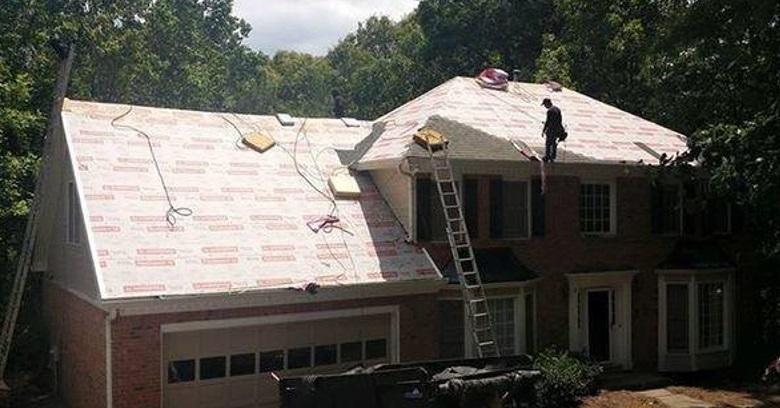
A new roof installation is no inexpensive home improvement project, so it is natural for homeowners to want to put it off as long as possible.
The time will eventually come, though, when roof replacement ends up being the better option over putting money into roofing repairs.
Even homeowners who have been good about providing regular roof maintenance will eventually get to the point where a new installation is the most cost-effective option.
These are some of the signs to look out for, and the best indicators that it is time to plan for having a new roof put on.
1. How Old Is The Roof?
The age of a roof is one of the prime indicators that it is time to start planning for a roof replacement.
Installations that have reached 85% of their suggested life expectancy may last longer than that if they are in great condition but the chances are greater that they will not.
Instead, those last few years could result in higher heating and cooling bills as the protective qualities of the older materials have dissipated, leaks and other damage as roofing materials dry out and become less resilient, and an aged appearance taking away from curb appeal.
2. What Is Its Current Condition?
A roof installation that is in great condition is always a bonus, no matter what its age is.
Naturally, older installations will start to lose condition as they reach their life expectancies, but when a newer one loses condition, this is a sign that it might not make it to its prescribed ripe old age.
Regardless of how old the installation is or how much roof maintenance it has received, if it is in poor condition, replacement is going to be a more cost-effective option than dealing with repairs over time once things start failing.
3. Moving Or Staying?
Another consideration to make is whether there is a possibility the home will be sold in the near future.
If so, doing some repairs in lieu of actual roof replacement might be fine, especially if the installation still looks good otherwise.
Alternatively, an older roof can sometimes reduce a home’s resale value, in which case having a new installation put on could cover repairs and higher home value in one effort.
4. What Budget Is Available?
If a new roof requires saving for a few years or taking out an equity loan, it is understandable that some people might not have the funding immediately available.
In those cases, the only feasible option might be to continue with roof maintenance and repairs as problems arise until the money can be secured.
If the funds are available, however, the best plan is to refer to the other points listed here to determine when is the right time to choose replacement over more repairs.
5. How Many Repairs Have Been Made?
Last of all, after taking age, condition, appearance, and budget into account, a continuous need for repair suggests that even a roof installation that looks beautiful and is only halfway to its life expectancy might qualify for early replacement.
Whether the condition relates to problems with the roofing materials or a poor installation job, the fact remains that the need for more and more repairs as time goes on means the future is going to bring even more of the same.
The most cost-effective solution is to replace the faulty installation with a new one and cut the losses.
Consider These Points to Decide When To Replace Or Repair A Roof
Proper roof maintenance is the number one way to ensure a roof lasts as long as it should.
Still, whether due to age, frequent repair, or other problems, homeowners should know when to pull the plug on their current installation and choose to replace their roof installation over continuing to repair it.
An experienced roofer can help any homeowner decide whether roof replacement would be the more economical and beneficial option, or if making repairs is still possible.
Need Commercial Roof Damage Repair Services
GMA Restoration Can Fix Commercial Roof Damage Repair
Call 979-356-2392
